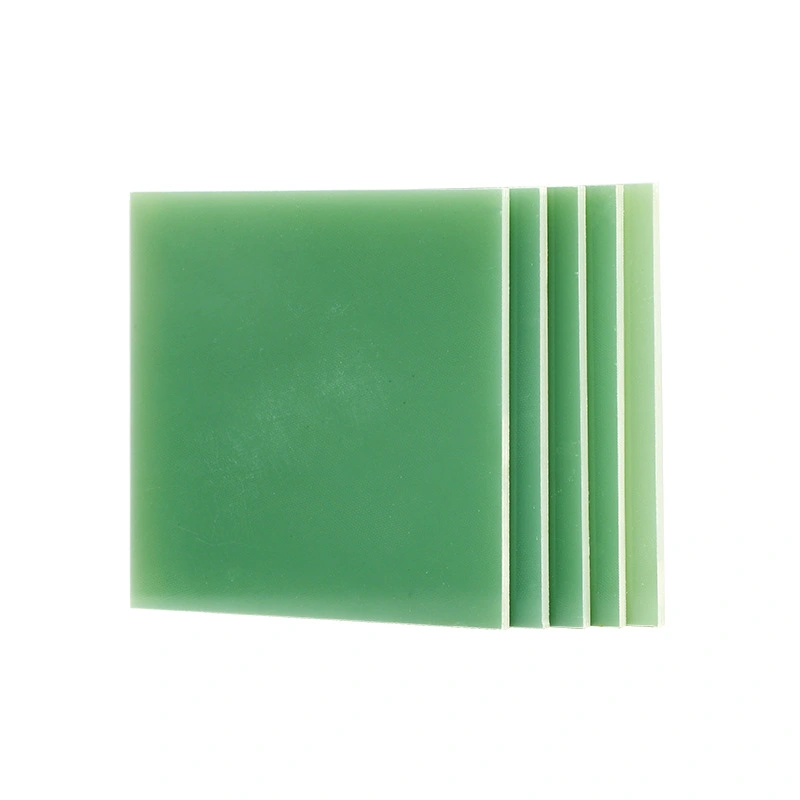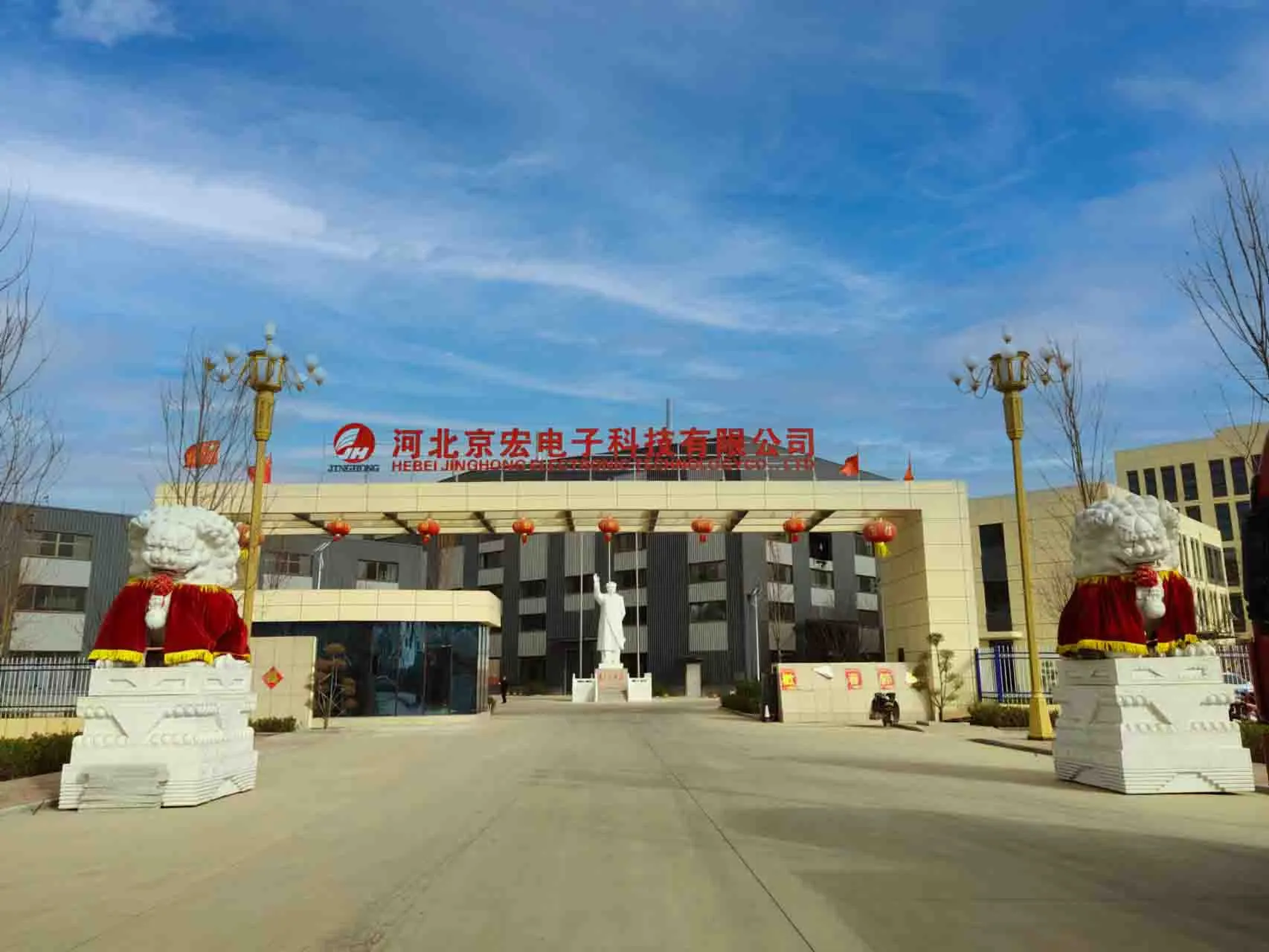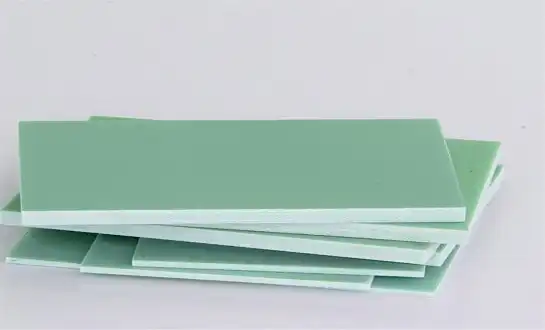The Role of Brominated Additives in the Resin System
Chemical Structure of Brominated Compounds
Brominated flame retardants (BFRs) play a crucial role in enhancing the fire resistance of FR4 epoxy boards. These compounds consist of multiple bromine atoms chemically bonded to an organic framework, which imparts high thermal stability and effective flame inhibition. The large atomic size and high electronegativity of bromine atoms disrupt free radical reactions during combustion, slowing flame propagation. By understanding the chemical structure and properties of BFRs, manufacturers can optimize their selection and concentration, ensuring that FR4 boards achieve consistent fire-retardant performance across a wide range of electronic applications.
Synergistic Effects with Antimony Trioxide
Brominated additives achieve greater flame-retardant performance when combined with antimony trioxide (Sb2O3). This synergistic effect enhances the formation of a protective char layer during combustion, effectively reducing heat release and smoke generation. The interaction between BFRs and Sb2O3 creates a more efficient flame inhibition mechanism than either component alone, improving safety standards and compliance with regulatory requirements. By leveraging this synergistic combination, manufacturers can produce FR4 epoxy boards with superior fire-resistance properties suitable for demanding industrial and consumer electronic applications.
Incorporation into the Epoxy Matrix
The successful integration of brominated flame retardants into the epoxy resin matrix is essential for FR4 board performance. During manufacturing, these additives are carefully dispersed throughout the polymer to achieve uniform protection across the entire board thickness and surface area. Proper incorporation ensures that the flame-retardant properties are consistent, preventing weak points that could compromise safety. This controlled distribution also maintains the mechanical and electrical integrity of the FR4 board, allowing manufacturers to produce reliable, high-performance electronic materials that meet strict fire-safety and industry standards.
How Does It Achieve a UL94 V-0 Rating?
Understanding UL94 V-0 Classification
The UL94 V-0 rating is one of the most rigorous flammability standards established by Underwriters Laboratories, designed to evaluate the fire resistance of polymeric materials. To achieve this classification, a material must self-extinguish within 10 seconds after being exposed to a vertical flame, without producing flaming drips that could ignite surrounding materials. Additionally, minimal afterglow is permitted to ensure comprehensive fire safety. Meeting the V-0 standard demonstrates that FR4 boards provide superior protection in electronic applications, reducing fire hazards and enhancing user safety.
Testing Protocols for FR4 Boards
FR4 epoxy boards undergo extensive and repeated testing to confirm compliance with UL94 V-0 standards. These protocols involve subjecting multiple samples to controlled flame exposure, recording burn times, and monitoring any dripping behavior. Each batch must consistently exhibit rapid self-extinguishing characteristics while producing no flaming droplets. This rigorous testing ensures that the boards maintain reliable fire resistance throughout their lifecycle. By validating performance across numerous samples, manufacturers can confidently certify that their FR4 products meet the strict safety expectations of global markets.
Performance Criteria and Margins
Achieving and maintaining a UL94 V-0 rating requires FR4 boards to exceed minimum flammability requirements. Manufacturers often design products with additional performance margins, ensuring that even minor variations in production or environmental conditions do not compromise fire resistance. This proactive approach guarantees consistent compliance and enhances overall safety reliability. By maintaining these strict performance standards, FR4 manufacturers provide end-users with dependable materials suitable for high-demand applications, reinforcing trust, meeting regulatory obligations, and supporting long-term product quality in diverse electronic devices.
Mechanisms that Suppress Combustion and Prevent Flame Spread
Gas-Phase Flame Inhibition
Brominated compounds in FR4 epoxy boards play a critical role in gas-phase flame suppression. When the material is exposed to high temperatures, these compounds decompose and release bromine radicals. These radicals react with highly reactive hydrogen and hydroxyl radicals in the flame, interrupting the chain reactions that sustain combustion. This mechanism effectively quenches flames in the gas phase, reducing fire propagation. By targeting the chemical reactions at the molecular level, FR4 boards achieve superior flame resistance, enhancing safety and reliability in electronic devices and other high-temperature applications.
Char Formation and Insulation
During exposure to heat, the epoxy resin in FR4 boards undergoes carbonization, forming a stable char layer on the surface. This carbonaceous barrier acts as an insulating shield, limiting heat transfer to the underlying material and restricting the release of combustible gases. By slowing the spread of thermal energy and reducing the availability of flammable volatiles, the char layer helps contain flames and protects adjacent components. This physical mechanism, combined with chemical flame inhibition, ensures that FR4 boards maintain structural integrity and reduce fire hazards in demanding electronic environments.
Endothermic Decomposition
Certain flame-retardant additives within FR4 boards undergo endothermic decomposition when subjected to heat. This process absorbs thermal energy from the surrounding material, effectively lowering local temperatures and slowing pyrolysis—the thermal breakdown of the resin in an inert atmosphere. By reducing the rate at which combustible gases are generated, endothermic decomposition contributes to delaying ignition and flame propagation. This complementary mechanism works in conjunction with gas-phase inhibition and char formation, providing a multifaceted approach that enhances fire resistance and ensures FR4 boards meet stringent safety standards.
Conclusion
The flame-retardant properties of FR4 epoxy board represent a triumph of materials science and engineering. Through the careful integration of brominated compounds, synergistic additives, and a robust epoxy matrix, FR4 achieves remarkable fire resistance. This combination of chemical intervention and physical barrier formation not only meets stringent safety standards but also provides crucial protection in electronic devices and systems. As technology advances, ongoing research continues to refine and improve these flame-retardant mechanisms, ensuring that FR4 remains at the forefront of fire safety in the electronics industry.
FAQs
What makes FR4 epoxy board flame retardant?
FR4's flame retardancy is primarily due to brominated compounds integrated into the epoxy resin, often enhanced by synergistic additives like antimony trioxide.
Can FR4 boards completely prevent fires?
While FR4 boards significantly reduce fire risks, they cannot completely prevent fires. They are designed to self-extinguish and slow flame spread, providing crucial time for fire detection and suppression systems to activate.
Are there environmental concerns with FR4's flame retardant additives?
Some brominated flame retardants have raised environmental concerns. However, the electronics industry is actively researching and developing more environmentally friendly alternatives that maintain the same level of fire safety.
Trust J&Q for Your FR4 Epoxy Board Needs
At J&Q, we leverage over two decades of experience in insulating sheet production to deliver top-quality FR4 epoxy boards. Our expertise in foreign trade and logistics ensures seamless service from production to delivery. For unparalleled flame-retardant solutions and exceptional customer service, contact us at info@jhd-material.com. Choose J&Q - your reliable FR4 epoxy board manufacturer and supplier.
References
Smith, J. A., & Johnson, B. C. (2020). Advanced Flame Retardancy Mechanisms in FR4 Epoxy Composites. Journal of Fire Sciences, 38(2), 112-128.
Lee, H. S., et al. (2019). Synergistic Effects of Brominated Compounds and Antimony Trioxide in FR4 Laminates. Polymer Degradation and Stability, 164, 1-10.
Wang, X., & Zhang, Y. (2021). Thermal Decomposition Kinetics of FR4 Epoxy Resin: Implications for Fire Safety. Thermochimica Acta, 698, 178884.
Underwriters Laboratories. (2018). Standard for Tests for Flammability of Plastic Materials for Parts in Devices and Appliances. UL 94.
Chen, L., & Wang, Y. (2022). Recent Advances in Environmentally Friendly Flame Retardants for FR4 Alternatives. Green Chemistry, 24(10), 3889-3912.
Roberts, T. A., & Thompson, K. M. (2023). Comparative Analysis of Flame Spread in FR4 and Emerging PCB Materials. Fire Technology, 59(3), 1205-1224.






